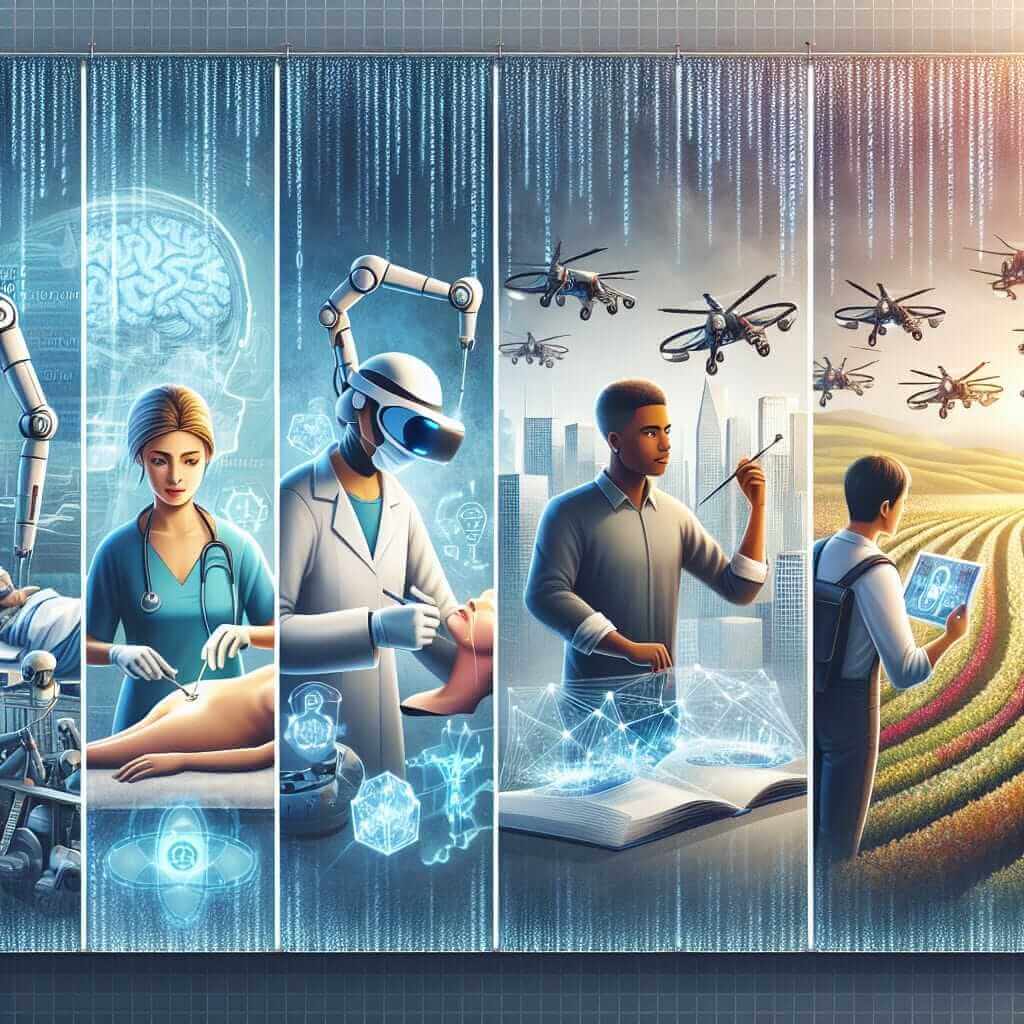The effects of digital technology on employment are a common topic in IELTS Writing Task 2. The ever-growing influence of digital advancements on the workforce has become a central theme in essays over the years, reflecting global trends and concerns. From automation to remote working, the implications are multifaceted and often debated. Considering the frequency of this topic in IELTS exams, it’s valuable to explore various facets of the theme to improve one’s writing skills.
Sample IELTS Task 2 Essay Question Used in Past Exams
- “Digital technology is transforming the jobs market. Discuss the positive and negative impacts of digital technology on employment.”
- “To what extent do you agree or disagree with the statement: ‘Automation and digital technology are leading to job loss in various sectors.'”
- “The rise of digital technology has changed the nature of work. Discuss the advantages and disadvantages of this trend.”
Selected Essay Question for Detailed Analysis
Digital technology is transforming the jobs market. Discuss the positive and negative impacts of digital technology on employment.
Analyzing the Essay Question
The task requires a balanced discussion of both positive and negative effects of digital technology on employment. A well-rounded essay should cover at least a couple of points for each side and offer a clear conclusion. As it is a discussion essay, it won’t require a firm stance but a comprehensive evaluation.
Sample Essay
Introduction
In recent years, digital technology has drastically transformed the employment landscape. This transformation brings about both promising opportunities and challenges. While technological innovations can increase efficiency and create new job sectors, they also lead to job redundancy and significant shifts in skill requirements.

Positive Impacts of Digital Technology on Employment
One of the most significant benefits of digital technology is the creation of new job sectors. For instance, the rise of the internet has birthed industries such as digital marketing, cybersecurity, and e-commerce. These sectors have not only provided millions of jobs but also spurred economic growth.
Additionally, digital tools and automation have enhanced productivity in traditional industries. Through the use of advanced software, businesses can streamline their processes, allowing employees to focus on more strategic tasks. This shift not only improves business efficiency but also augments job satisfaction as employees engage in more meaningful work.
Negative Impacts of Digital Technology on Employment
Conversely, digital technology also presents notable challenges. Automation and AI have been linked to job losses, particularly in sectors such as manufacturing and retail. Machines and algorithms can perform routine tasks more efficiently than human workers, leading to a decrease in demand for low-skilled labor. This displacement can result in unemployment and economic insecurity for those unable to transition to new roles.
Moreover, the rapid pace of technological change necessitates continuous upskilling and reskilling. Many workers may find it difficult to keep up with the evolving demands, leading to a skills gap. This issue is compounded in regions where access to education and training is limited, potentially exacerbating economic inequalities.
Conclusion
In conclusion, digital technology’s influence on employment is a dual-edged sword. While it fosters the development of new industries and boosts productivity, it also poses challenges such as job displacement and the need for continuous learning. Policymakers, educators, and businesses must collaborate to mitigate these negative impacts and ensure that the workforce can adapt to the evolving digital landscape.
(Word Count: 307)
Tips for Writing an Essay on This Topic
- Vocabulary Use: Incorporate specific terms related to technology and employment, such as “automation,” “upskilling,” “digital transformation,” and “productivity”.
- Grammar and Structure: Use complex sentence structures to demonstrate a high level of grammatical accuracy. Phrases like “Conversely,” “Moreover,” and “In conclusion” are essential for clear structuring.
- Balanced Discussion: Give equal weight to both positive and negative impacts, ensuring a balanced view.
Advanced Vocabulary
- Redundancy (noun) [rɪˈdʌndənsi]: the state of being no longer in employment because there is no more work available.
- E-commerce (noun) [ˈiːkɒmɜːs]: commercial transactions conducted electronically on the internet.
- Algorithm (noun) [ˈælɡərɪðəm]: a process or set of rules to be followed in calculations or other problem-solving operations, especially by a computer.
- Displacement (noun) [dɪsˈpleɪsmənt]: the removal of someone from their job or role.
- Cybersecurity (noun) [ˌsaɪbərsɪˈkjʊərɪti]: the state of being protected against the criminal or unauthorized use of electronic data.
Conclusion
Digital technology’s impact on employment is a prime topic for IELTS Writing Task 2, offering a comprehensive overview of both benefits and challenges. Future exams may present similar topics, focusing on automation, job displacement, or the evolving skill requirements in the digital age. Prepare by exploring both sides of the argument and supporting your points with relevant examples and vocabulary.